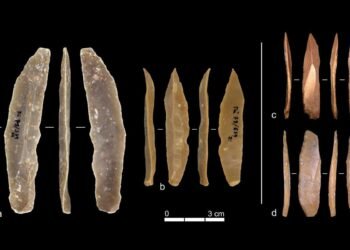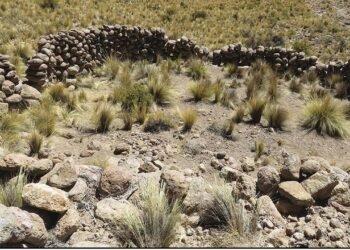Archaeologists from the University of Gothenburg have made a groundbreaking discovery near the Bronze Age city of Dromolaxia Vizatzia, located at Hala Sultan Tekke on the southeastern coast of Cyprus.
The find consists of royal tombs dating back to approximately 1500 to 1300 BCE, making them some of the most luxurious tombs ever unearthed in the Mediterranean region.

The leader of the expedition and Professor of Archaeology at the University of Gothenburg, Peter Fischer, believes that these tombs likely belonged to royalty, although specific details about the city’s governance during that era remain elusive.
He stated, that considering the richness of the grave goods, it is a reasonable assumption that these were royal tombs, even though we do not know much about the form of government practiced in the city at the time.
The discovery of the site was facilitated by the use of magnetometers, which helped detect magnetic anomalies below the surface.
By comparing the magnetometer map to an area where fragmented pottery had been displaced due to farming activities, researchers identified significant underground cavities, leading them to the tombs.
The tombs are comprised of underground chambers, each measuring up to 4 x 5 meters, accessible through narrow passageways from the surface.
These chambers proved to be an archaeological treasure trove, housing over 500 intact artifacts, including precious metals, gems, bronze weapons, ivory, high-status ceramics, and a gold-framed seal made of haematite.
Interestingly, about half of the tomb contents were imported from neighboring cultures and civilizations. Gold and ivory were traced back to Egypt, while precious stones originated from Afghanistan, India, and Sinai. Additionally, amber objects were found, having come from the Baltic region.
The expedition also uncovered several remarkably preserved skeletons within the tombs. One notable discovery was the burial of a woman surrounded by dozens of ceramic vessels, jewelry, and a round bronze mirror, polished in its heyday. Adjacent to her lay a one-year-old child with a ceramic toy.
Further examination revealed that both men and women buried in the tombs wore diadems, and ornamental headbands, with some necklaces adorned with high-quality pendants likely crafted in Egypt during the 18th dynasty.
These items are reminiscent of the reigns of renowned pharaohs such as Thutmos III, Amenophis IV (Akhenaten), and Nefertiti.
The significance of the artifacts goes beyond their intrinsic value; they shed light on the city’s prosperity during the period when it served as a prominent center for copper trade. The Department of Antiquities in Cyprus commented on the city’s wealth, stating, “The city’s wealth seems to have been based on the production of copper and trade with near and distant cultures.”
The University of Gothenburg’s Söderberg expedition, which has been conducting excavations at Hala Sultan Tekke since 2010, has previously made significant finds, but this recent discovery surpasses them all in terms of both quantity and quality.
The tombs at Hala Sultan Tekke have provided a fascinating glimpse into the past, offering valuable insights into the city’s governance, trade relationships, and the lives of its privileged inhabitants.






















